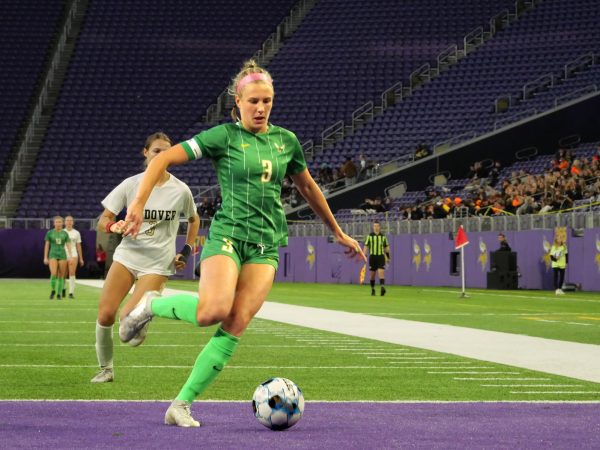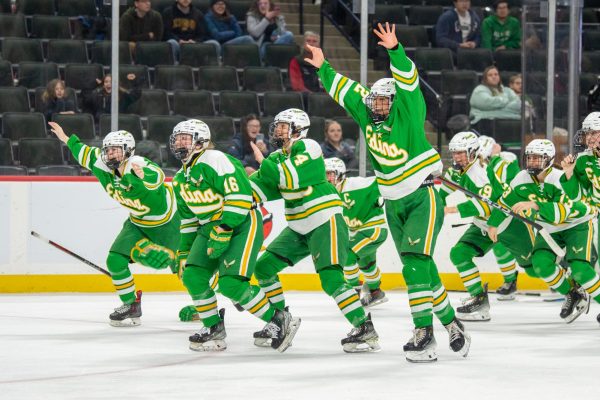Concussions and brain trauma: the dark side of sports
November 27, 2018
At Edina High School, all students love Friday night football, especially when we win. With the EHS Football team’s 6-2 record and a high state rank, this year’s state title is in sight. However, with every practice and every game lies a hidden threat: injuries, more specifically, concussions.
Ever since this year’s football season started, there have been multiple stories of brain trauma-related deaths. On Sept. 30, junior Dylan Thomas, a linebacker for his high school team in Georgia, died of a severe head injury he sustained during the previous game. A few days before, another linebacker, sophomore Christion Abercrombie of Tennessee State University, was rushed to the hospital after collapsing on sidelines from a head injury.
Concussions are no stranger to the EHS football team. Although there haven’t been any deaths related to severe head injuries, concussions are still a major threat which can keep players on the bench for weeks. The team’s most recent major concussion happened to senior Jackson Mollet during the Homecoming game; Mollet returned to the field on Oct. 12.
As of right now, the team is managing about six concussions, EHS Head Athletic Trainer Steven Tschida said. To keep players in good health, Tschida and the other trainers follow a strict protocol when dealing with concussions. The players must show no symptoms while at rest, with light excursions, and then non-contact activities. If they pass those steps, they are eased back onto the field. “If we can satisfy this, then we’re at the best chance to prevent an injury that may result in a higher rate of complications and more prolonged recoveries,” Tschida said.
Awareness of the concussion is key. “I never really thought I was at risk for a concussion,” senior and wide receiver Anders Freeland said, regarding his attitude before he had a moderate concussion last year. It’s important to realize that almost anyone can get a concussion. “High schoolers, because they are still developing, are more prone to concussion symptoms and more significant brain injuries because of their age,” Tschida said. He trusts students to come forward with their injuries so he can guide them on the best recovery path.
Communication is by far the most important part of this process because concussion symptoms present themselves in different ways. Symptoms include headaches, nausea, dizziness, sensitivity to light and noise, and difficulty concentrating. Furthermore, no one symptom can single-handedly indicate a serious concussion. “You have to be acute to each athlete,” Tschida said regarding the players’ treatment.
Due to the nature of the game, concussions can’t be fully eliminated. “Football’s football. You’re going to have contact,” Tschida said. However, there is still a lot that can be done to protect players. In the past few years, the team has acquired new gear, such as the Riddell Speedflex Helmets, to protect players from concussions. But Tschida doesn’t think this is enough. “We can get the highest quality, highest technology helmet out there, but the helmet isn’t designed to prevent concussions as much as it is to prevent skull fractures or more significant brain injuries,” Tschida said. He believes concussion prevention lies in practice techniques. At the high school level, most concussions occur during practice. Ergo, limiting the amount to contact practice days the team has sounds like a good solution to Tschida.
The NFL and MNSFL are also taking steps to prevent concussions by creating new rules. These rules protect the quarterback after he’s thrown the ball and prohibit players from “leading with their heads,” which used to cause head-to-head collisions. If players are caught leading with their head, they’re given a penalty. “That’s all the incentive not to do that,” Freeland said.
Football remains a dangerous sport due to concussions. But, the prospect does not daunt players. “If people want to play football, they should know the risks,” Freeland said. The athletic training facility has several systems in place when it comes to taking care of the football team’s concussions. Even if concussions can’t be completely prevented, due to beneficial changes, these injuries will definitely be reduced.









![Edina Boys team cheering on swimmers during race on December 15th meet versus STMA at Art Downey Aquatic Center.
“We practice for two hours Monday through Thursday. And then we get [to the meet location] a bit ahead of time and then do some more [practice before the meet],” senior captain Leo Mellum said, who swam the 200 IM and 100 Fly.](https://edinazephyrus.com/wp-content/uploads/2023/12/zcoYsx0FYOC7bDXggROFhKXgQqO3uMaoP6PpCzqg-600x400.jpg)
